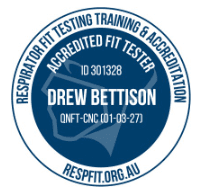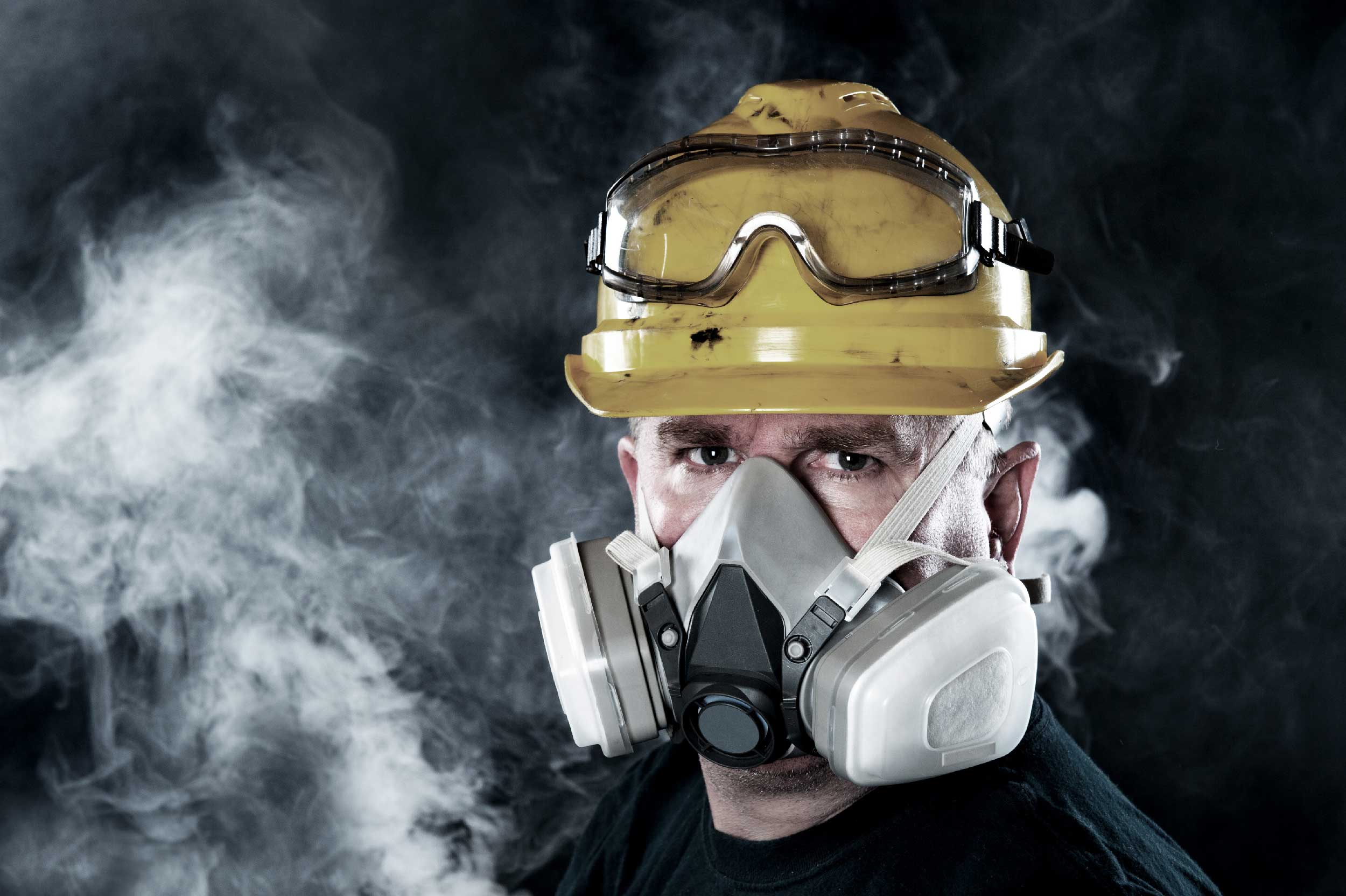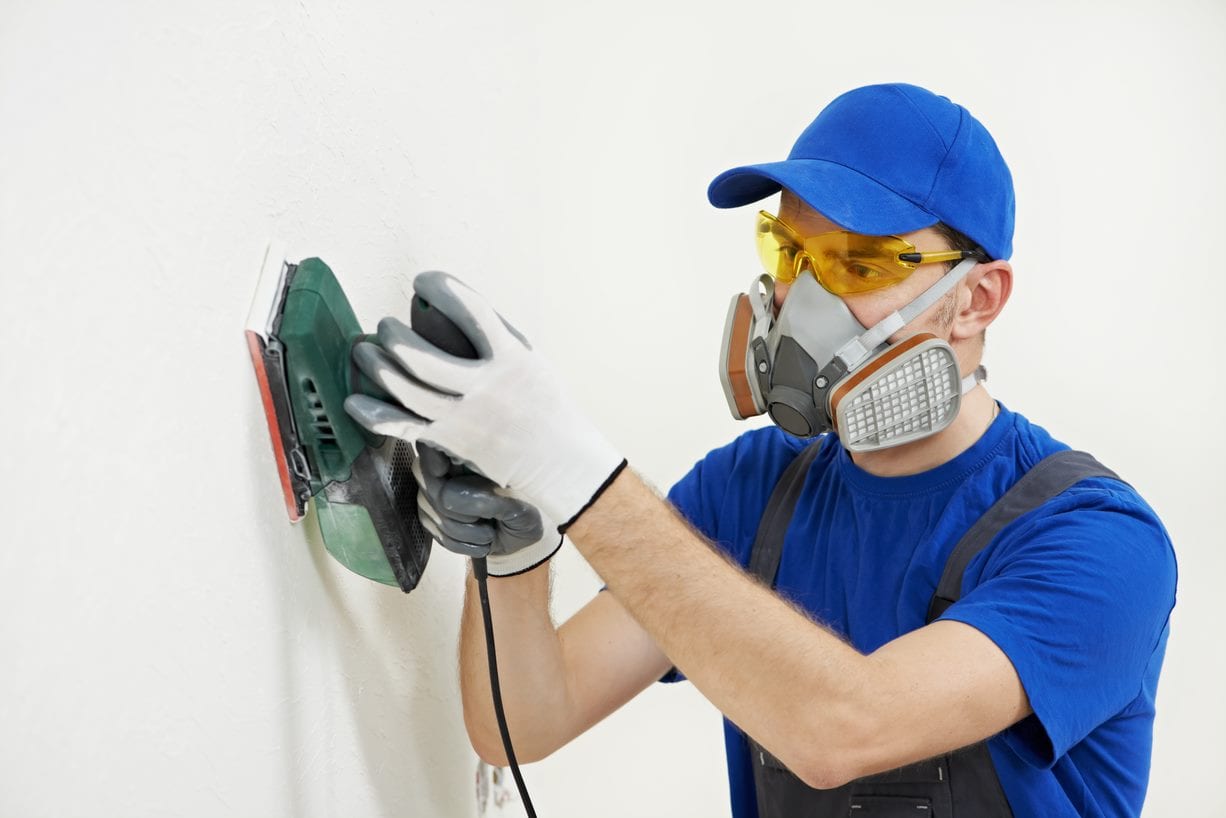Accurate & Efficient Respirator Fit Testing
Protect the respiratory health of your workers with complete confidence.
What is respirator fit testing?
Respirator fit testing is a process used to ensure that a tight-fitting respirator forms an effective seal against the wearer’s face. This seal is crucial to protect the wearer from harmful airborne contaminants, such as dust, fumes, gases, or infectious particles, by preventing these substances from leaking around the edges of the respirator.
Fit testing is required for anyone who needs to wear a tight-fitting respirator as part of their job and is a key component of workplace health and safety practices.
When is respirator fit testing required?
- Before an employee wears a respirator for the first time.
- Annually, to ensure the fit is still effective.
- Whenever there is a significant change to the wearer’s face (e.g., weight gain/loss, dental work, facial surgery).
- When a new type, size, or model of respirator is introduced.
Why is respirator fit testing important?
- Ensures compliance with workplace safety regulations (such as AS/NZS 1715 in Australia).
- Protects workers from exposure to hazardous substances.
- Identifies poorly fitting respirators that may not provide the intended protection.

Testing is conducted in accordance with Australian Standards AS/NZ 1715:2009 Selection Use and Maintenance of Respiratory Protective Equipment (half face, full face and disposable masks).
We can test all disposable respirators and most major reusable respirator brands, including 3M, Moldex, Sundstrom, and Draeger. Fit testing for other brands such as Honeywell, Pro Choice, Maxiguard, and Scott can also be arranged if required; however, in some cases, the appropriate adapter may need to be sourced beforehand.
Our testing is overseen by Drew Bettison, a consultant with RESP-FIT Accreditation (An AIOH Program).
Types of Respirator Fit Testing
There are two types of respirator fit testing available. The type of testing you choose should be based upon the legislative standard, type of respirators being used in your workplace and the hazardous particle exposure.

Quantitative Fit Testing
Quantitative fit testing is used for any full face and/or tight-fitting respirator. It involves an instrument called a Portacount, measuring the leakage around the face seal of the respirator and providing a numerical value called a fit factor. This fit factor provides an indication as to whether the chosen respirator provides adequate protection for the individual. Quantitative fit testing is considered the gold standard for workers exposed to hazardous particles in the workplace.

Qualitative Fit Testing
Qualitative fit testing is a less commonly used method of evaluating respirator fit. Typically, it is used for workers that would be required to wear either a disposable paper mask or respirators that just cover their nose and mouth, or half-mask respirators.
Qualitative fit testing works by detecting leakage of the respirator using your sense of taste and/or smell. It is a pass or fail method that relies heavily on the subjective reports of the individual and for this reason is not the preferred method.
How it Works
Prior to the testing
KINNECT ensures a seamless respirator face fit testing process by contacting you beforehand to discuss the makes and models of respirators used in your workplace. You’ll need to provide samples of the respirators and filters (one per individual being tested). KINNECT will confirm that the appropriate adapter is available to connect the Portacount machine to your specific respirator models.
To help prevent unnecessary test failures, KINNECT will advise on factors that may affect test results. This information should be shared with employees to prepare them for testing and minimise the need for repeat assessments.
For onsite testing, KINNECT will supply a run sheet to help you organise appointment times. Initial tests take approximately 15 minutes, with subsequent tests (if needed) requiring about 10 minutes each. For testing conducted at a KINNECT office, employees will receive appointment notifications via SMS and email, including time and location details.
On the Day of Testing
If testing is conducted onsite, KINNECT will travel to your workplace with all necessary equipment, arriving 30 minutes before the first test to set up.
During their appointment, each employee will be informed of their test results.
Results / Reports
Every employee will receive an individual report at the time of testing. For workplaces needing a group summary report, KINNECT can provide one for an additional fee.
Service Locations
At KINNECT, we make workplace safety simple and convenient by offering Respirator Face Fit Testing services at many of our clinics or directly at your workplace.
- At Our Clinics
Contact us to arrange an appointment for professional face fit testing. Our trained specialists will conduct the testing in a controlled environment, ensuring accurate and efficient results. Employees will receive their individual reports and test outcomes during their appointment, and we’ll handle all the details to make the process seamless. - Onsite at Your Workplace
For added convenience, we bring our face fit testing services to your workplace. Our mobile testing solution includes all necessary equipment, and our team will arrive 30 minutes before the first scheduled test to set up. This service minimises disruption to your operations and ensures your entire workforce can be tested efficiently without the need for travel.
KINNECT can travel to your workplace from any of the following locations:
-
Brisbane, QLD
-
Gold Coast, QLD
-
Sunshine Coast, QLD
-
Gladstone, QLD
-
Rockhampton, QLD
-
Mackay, QLD
-
Townsville, QLD
-
Cairns, QLD
-
Melbourne, VIC
-
Mascot, NSW
-
Macquarie Park, NSW
-
Perth, WA
-
Adelaide, SA
-
Bundaberg, QLD
-
Newcastle, NSW
-
Rockingham, WA
Conduct Testing Internally with Respirator Face Fit Testing Training
KINNECT can arrange training for your employees so can competently perform respirator face fit testing for your workforce. This training course is designed to teach students the theory and practical skills they need to operate a Portacount machine and perform both quantitative and qualitative face fit testing.
Learn to conduct respirator fit testing in your workplace.
KINNECT Training offer a workplace training program to help businesses meet their workplace health and safety obligations by providing in-house respirator fit testing.
Save your business time and money.
- Face to face delivered on-site or through our public courses
- Designed to meet Australian Standards for all workers who are required to wear a respirator at work
- Ongoing support and education available to all students
- Australia-wide delivery
- Includes the issuing of your personal Respirator Fit Tester ID Card
FAQ
How is the correct fit of a respirator measured?
The fit of a respirator involves three components:
- Seal
- Compatibility
- Stability
Seal
If a respirator is a good fit, it will seal properly to the user’s skin. A respirator works by contaminated air passing through a filter. If the respirator is not sealed correctly, the contaminated air will likely go around rather than through the respirator’s filter.
Compatibility
It is important to analyse whether other personal protective equipment (PPE) will interfere with a respirator. Coveralls, safety glasses, hard hats, hearing protection and face shields are all examples of PPE that may compete for space on a user’s head, face or body. For example, a half face respirator can overlap with safety glasses if not fitted correctly. To combat this problem, any PPE identified as potentially disruptive should be worn during the fit test.
Stability
When a respirator fits well, it is more likely to remain stable on the user’s face during movement. Throughout fit testing, users are required to undertake several different exercises to ensure the seal is not broken when they are in motion. Any respirator that shifts during movement may not be able to retain a good seal.
When should I organise a respirator fit test for my employees?
It is important that all employees pass a respirator fit test prior to wearing their tight-fitting respirator for the first time on site. Fit testing is required for all tight-fitting respirators and includes half-face disposable, half and full-face reusable and powered air purifying respirators.
In addition to first time users, respirator fit testing must be conducted each time a new make or model is issued to a worker or when a worker’s features or facial characteristics dramatically change (e.g. when there has been significant weight gain or loss).
To ensure ongoing protection, fit testing should be repeated annually.
Does facial hair impact on the fit of a respirator?
The proper fit and use of respirators is paramount when considering optimal employee health. Workers must ensure that they are clean-shaven prior to wearing a respirator. Facial hair can interfere with the ability to create an effective face seal, placing unnecessary risk on the worker.
KINNECT recommends face fit testing only be conducted on males who are clean-shaven.
What is the difference between fit checking and fit testing?
Fit checking is a quick check to ensure the respirator is properly positioned and a good seal has been created. This should be conducted by the wearer each time a respirator is used. Fit checking does not replace the requirement of a fit test by an accredited practitioner.
There are two ways a respirator user can perform a fit check:
- A positive pressure check involves the user blocking the exhalation valve with their hands and attempting to breathe out. If the respirator fits well, there should be a slight pressure build up indicating that there is no air leakage.
- A negative pressure check involves the user blocking the intake valves with their hands and attempting to breathe in. If the respirator fits well, no air should be able to enter.
What factors may prevent a successful fit test?
- Smoking – if you are a smoker you will be required to refrain from smoking within 90 minutes prior to the test. This is because the portacount may detect smoking particulates in the exhaled breath, causing a false failure.
- Eating within 30 minutes prior to testing
- Facial hair in the area of the respirator will prevent a proper seal from being achieved, thus regulations preclude testing should significant facial hair be present
- If an individual has undergone substantial dental work
- Glasses – those requiring a full face mask are unable to wear glasses as a sufficient seal may not be achieved. If you require full face protection and need glasses you will need to investigate the use of contact lenses, or change to a powered respirator.
What is the purpose of the adapter?
Every make, model and series of respirators have a particular adapter that allows the connection of the respirator to the Portacount so that respirator fit testing can be completed.
KINNECT hold numerous adapters for various respirator brands.
How long does a test take to complete?
The first test takes approximately 15 minutes to complete. However in the event an individual does not pass their first face fit test, they may require a subsequent test in order to test them against another respirator make/model. Each additional mask takes another 10 minutes to test.
What do employees need to do to prepare for the test?
Employees should:
- Be clean-shaven, as facial hair can prevent an effective seal.
- Avoid eating, drinking (except water), or smoking 30 minutes before the test.
- Bring the respirator model they use for work.
Can we test multiple employees in one session?
Yes, we can test multiple employees in a single onsite visit. We’ll provide a run sheet to help coordinate appointment times and streamline the process.
What happens if an employee changes their respirator type after testing?
A new face fit test will be required if the make or model of the respirator changes, as each respirator fits differently.



